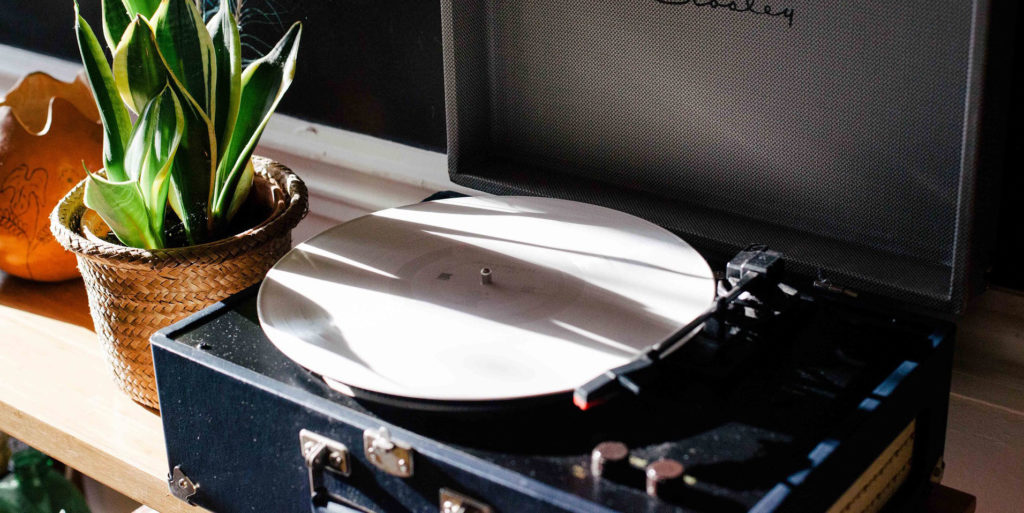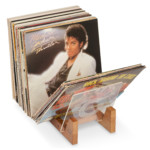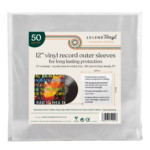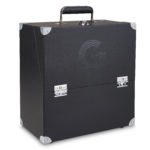If we are unfamiliar with the world of vinyl record collecting and the inherent logic within, then all of the numbers and glyphs can seem awfully frightening and overwhelming. Why can’t we just take our records and play them for crying out loud?!
But what if we were to play our new vinyl records too fast? What if we had David Bowie sounding like Alvin and the Chipmunks instead of his usual commanding self? And exactly what do the numbers mean on vinyl records?
As with plenty of numerical symbolism throughout the western world, the numbers outlined on vinyl records give us a deep clue as to their very nature. In this instance, they tend to tell us just how a vinyl record should be played if we want it to sound as close as possible to its intended release.
But why are there even different ways to play a vinyl record? Why are there different formats, different speeds at which we play vinyl records, and what do the numbers mean on vinyl records?

78 RPM Vinyl Records
Of the three primary speeds at which to play vinyl records, this is certainly the least popular and fashionable, with rarely any manufacturers catering for this speed in any of its productions. Records, by whatever logic, have better sound quality the faster they are played, the faster the RPM at which they are playing. In turn, a faster RPM means there will inherently be less space on the disc for music to play back; whether or not this is a worthy sacrifice is constantly up for debate between those more contentious vinyl enthusiasts.
The inventor of the Gramophone record, Emile Berliner, created records that were played between 70 and 80 RPM, a precedent which was followed pretty strictly to the point where 78 RPM became the industry standard throughout the western world by 1925. While the sizes of these original 78 RPM records vary, they were typically rendered on 10 inch records so as to accommodate for the shorter playback time, eventually becoming the standard size for records played at this speed.
This soon became a fairly unpopular form for music to be released upon, not just for the less than adequate playback time offered. The material used to make records of this variety was found to be more brittle and prone to shattering, an issue not just to the commercial prospects of a product but also for the well being of the consumer themselves.
For these reasons, 78 RPM records are rarely if ever produced anymore, and even older record players and turntables are scarcely found with a setting to play them, meaning that if they were produced they as a medium wouldn’t have much of an audience, despite any audiophilic claims of better fidelity.
What do the numbers mean on vinyl records like this? That this is more than likely a very old record!
33 1/3 RPM Vinyl Records
Soon, records that were intended to be played at 33 1/3 RPM became the standard currency for exchanging sounds between producer and consumer, remaining so to this day, with almost any turntable you can imagine offering the ability to play vinyl records at 33 1/3 RPM.
Unlike the 78 RPM vinyl record format, however, this form of playback was a relative late comer to the party, arriving at a time when radios were the primary source of musical and listening entertainment for most consumers. Thus, the 33 1/3 RPM format didn’t exactly have the smoothest start, though they were and still are relatively unparalleled, if only for being so effective at offering longer playback times on similar sizes of discs.
This has a two fold effect, especially for record companies who are looking to maximise profits at every turn. More playback time on one record means less materials have to be used to achieve a healthy relationship of supply and demand, making them more money in the process.
By 1948, after a less than welcoming birth into the world, Columbia records began advertising to the masses, heralding the 33 1/3 RPM record as a breakthrough in audio technology, able as it was to hold whole classical performance and symphonies on just one side of a 12 inch disc without the need to interrupt the listening experience to flip the disc.
Advertising it in this way, assimilating this format with the music of the western classical elite, instantly lent the format new standing in the music community, being able to hold what is considered by many to be the pinnacle of artistic achievement in the musical sphere.
What do the numbers mean on vinyl records like this? That this record can more than likely hold anything you throw at it, within reason of course!
45 RPM Vinyl Records
Then comes the advent of 45 RPM records in the 1950s, manufactured to compete with Columbia’s already immensely popular 33 1/3 RPM vinyl records. Yes, as with almost any innovation of this variety in the music industry, this has largely to do with financial gain – woe be the western world!
By contrast to the 33 1/3 RPM records, these 45 RPM records were manufactured on much smaller 7 inch records, almost half the size of the larger 12 inch records. The aim seems to have been to provide music listeners with a more transportable medium upon which to print more high quality versions of album singles.
Seeing as the album didn’t even really become a seriously considered medium until the 1960s – other than in collating a bunch of unrelated singles – this medium rapidly became the currency for the exchange of popular music, able as it was to contain in a smaller format the content from an upcoming release.
Radio was still the go to format for the discovery and exploration of all things popular and musical in this period. Many if not all popular radio hits of this period were, in fact, stored on 45 RPM 7 inch records. Used in this way, the discs were only really, at a push, able to contain one song per side, so the records quickly acquired the name ‘single’, which has since become the go to term for the naming of a song that is released outside the bounds of a longer form release.
Once the 45 RPM 7 inch vinyl records and the 33 1/3 RPM 12 inch vinyl records became the common currency between music enthusiasts, it was these formats that record companies and manufacturers of turntable and record playing equipment began to focus all their efforts on, leaving such antiquated formats like the 78 RPM vinyl record in the dust, despite being such an inherently audiophilic format.
What do the numbers mean on vinyl records like this? That this record is almost certainly a rather short little offering of something much larger!
Final Tones
So, there you have it, the initially overwhelming but now, I hope, lucid world of numbers on vinyl records, ready for you to explore anew and to make your own!
FAQs What Do the Numbers Mean on Vinyl Records?
The difference lies simply in the speeds at which they are played. A 78 RPM record will need to be played at 78 Revolutions Per Minute to be heard as close to as intended. A 45 RPM record will likewise require being played at 45 Revolutions Per Minute to be heard as close to the intended sound as possible. And a 33 1/3 RPM record has to, you guessed it, be played at 33 1/3 Revolutions Per Minute to achieve the same effect. The numbers like this on records are therefore indicators of the speed at which a record must be played to achieve its intended effect.
Nothing much other than hearing the song slower. Though this doesn’t sound like much on paper, the effect can be pretty drastic in reality, especially if it is a song whose original sound at 45 RPM you are well accustomed to. A famous example is Dolly Parton’s ‘Jolene’ played at 33 1/3 RPM, which takes on a rather hellish, though by no means unmusical, effect at this variant speed. You can get as creative with this as you like, I know I certainly do!
This information will almost always be elucidated on the centre sticker of a record. If, however, an artist has, for whatever reason, decided to eschew this information, it would be safe to assume that the speed is 33 1/3 RPM if it is a 12 inch record, and is 45 RPM if it is a 7 inch single, though there are obviously exceptions. A great way to be sure is simply to check how the song sounds through streaming platforms and to go from there.
If you have the catalogue number – usually printed on the inner rings of the disc or on the sleeve itself – then chances are you will be able to find out the specific pressing of the vinyl record in question. Lord knows there are endless droves of technological whizzes online these days who seem more than happy to help.




